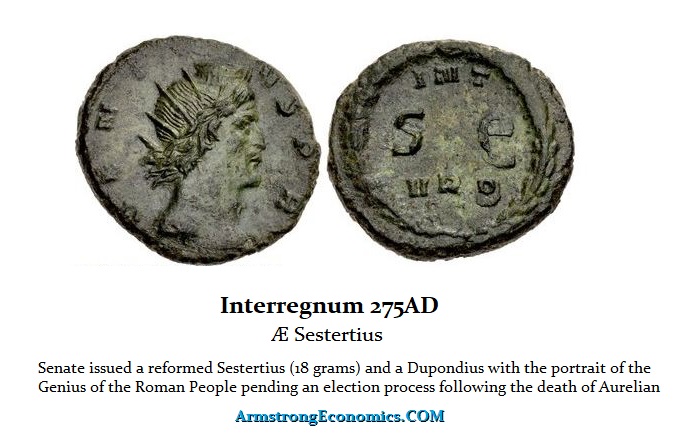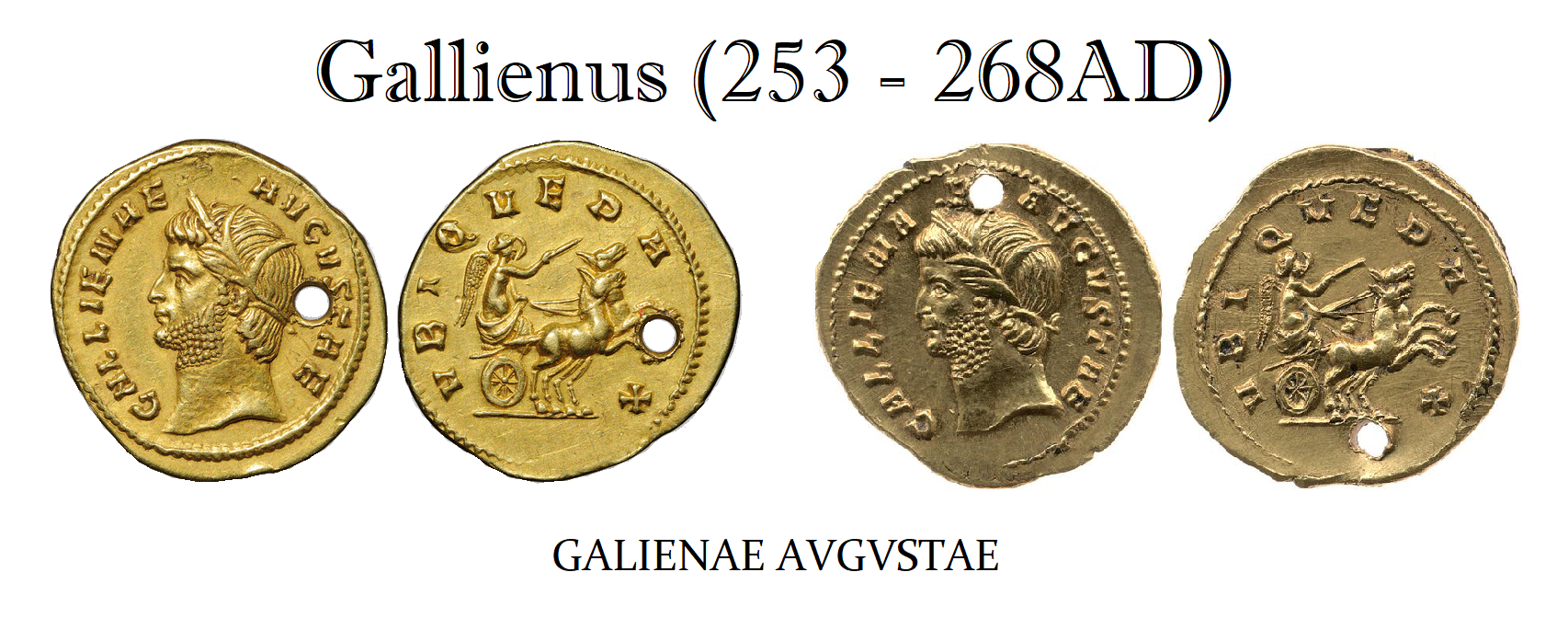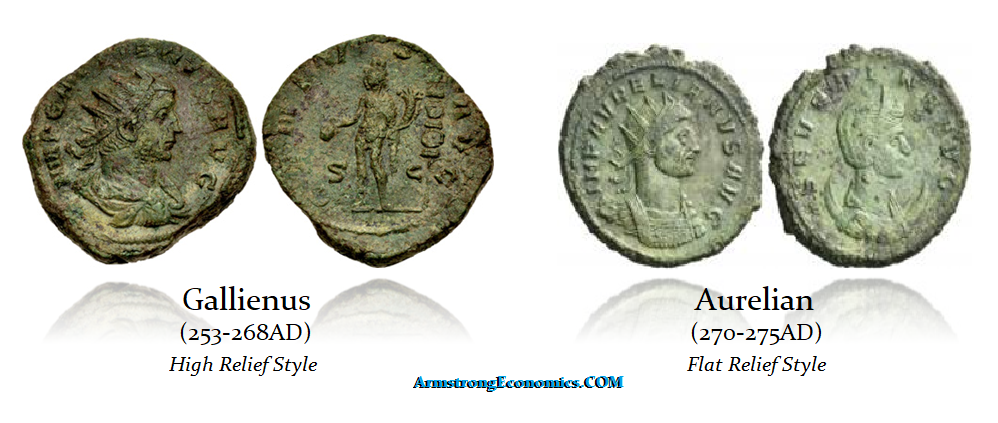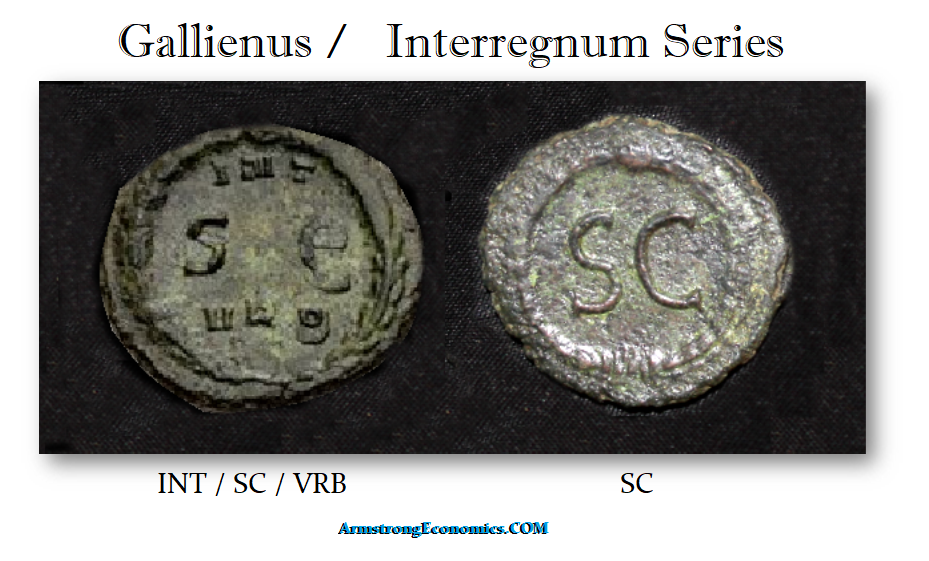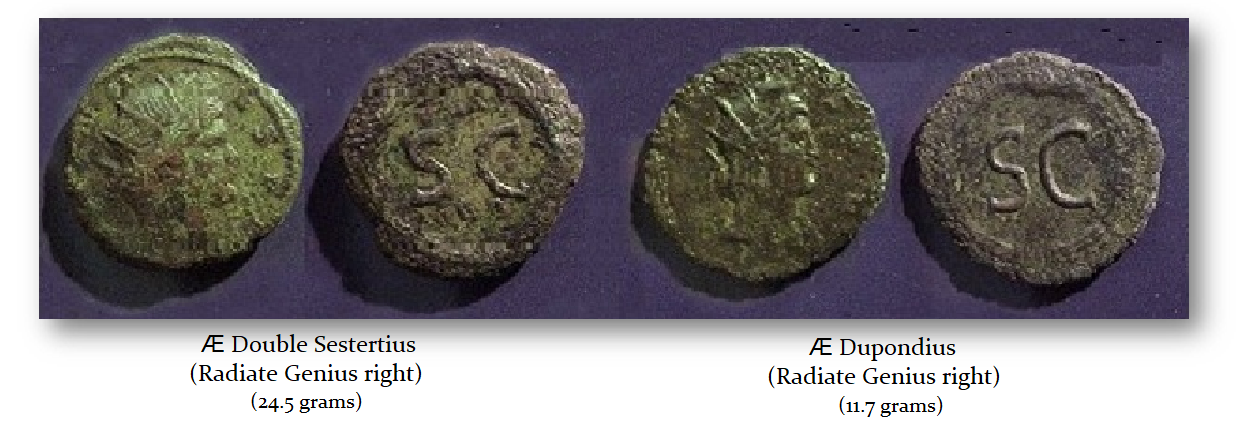The So-Called Interregnum Coinage
For decades, there has been a longstanding debate over the attribution of this anonymous issue of Ӕ Sestertius Laurel or Radiated head of Genius right. Over the decades, it has been agreed that these coins were produced at the Mint of Rome during the latter stage of the conclusion to the bronze Aes System, which extended from the Republican days. There have been competing arguments that they belong to a brief interregnum period between the reigns of Aurelian (270-275AD) and Tacitus (275-276AD). This has stood in contrast to others, purporting that these issues were of the reign of the reign of Gallienus (353-268AD).
Aurelian caught his secretary, Eros, in a lie during the campaign against Persia and promised dire punishment. Eros, fearing the worst, went to the Praetorian Guards and told them that Aurelian was also planning to kill them. To save his own skin, Eros began a plot that proved to be successful. Aurelian, at the age of 68, was assassinated at Caenophruriun in Thrace. Rome lost not merely one of its greatest generals but a man truly worthy to have occupied the throne of the Roman Empire. After the assassination, the soldiers dealt with the conspirators. Instead of raising their own candidate to the throne, they notified the Senate and appointed Tacitus after a few weeks, on September 25th, 275AD, according to Historia Augusta.
David Yonge has conducted a study of 114 examples. He has reassigned this peculiar issue to the end of the reign of Gallienus as opposed to the traditional placement during the interregnum between the death of Aurelian and the elevation of Tacitus. Yonge bases his determination on flan manufacture, portrait style, and a comparative analysis of mid-3rd century Roman monetary denominations. He suggests that this series was probably a commemorative issue in anticipation of Gallienus‘ entry into Rome after his victories over the Herulians and Goths at Naissus.
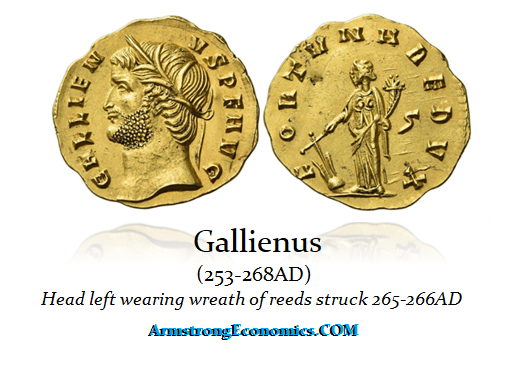 Yonge points out that András (Andreas) Ede Zsigmond Alföldi (1895–1981), a Hungarian historian, numismatist, and archaeologist, suggested that the portrait style was a closer match to Gallienus’s coinage. There was clearly better workmanship in the mint before Aurlian’s confrontation against the Roman mint for cheating the people and robbing the silver for themselves. The portrait style of the Gallienus aurei moved Alföldi to assign this interregnum to Gallienus.
Yonge points out that András (Andreas) Ede Zsigmond Alföldi (1895–1981), a Hungarian historian, numismatist, and archaeologist, suggested that the portrait style was a closer match to Gallienus’s coinage. There was clearly better workmanship in the mint before Aurlian’s confrontation against the Roman mint for cheating the people and robbing the silver for themselves. The portrait style of the Gallienus aurei moved Alföldi to assign this interregnum to Gallienus.
Before Yonge, this series had not been thoroughly investigated. Yonge studied 114 examples that persuaded him to attribute this series to Gallienus. Besides the portrait style, which was still high relief before Aurelian’s reform, and the flan size, this series is far more likely to be a particular issue under Gallienus, most likely struck during the 265 to 266AD people, along with Aurei.
There were Double Sestertius issued under Gallienus, weighing about 21 grams. The Sestertius and Dupondius under Aurelian weighed approximately 12 to 15 grams and 7 to 8 grams, respectively.
Monetary System
There are two reverse types with the one with just the “SC” in a wreath is far rarer than that of the INT/SC/VRB
MINTS: Rome
DENOMINATIONS
Æ Double Sestertius (17-25 grams)
Æ Dupondius (10-12 grams)

